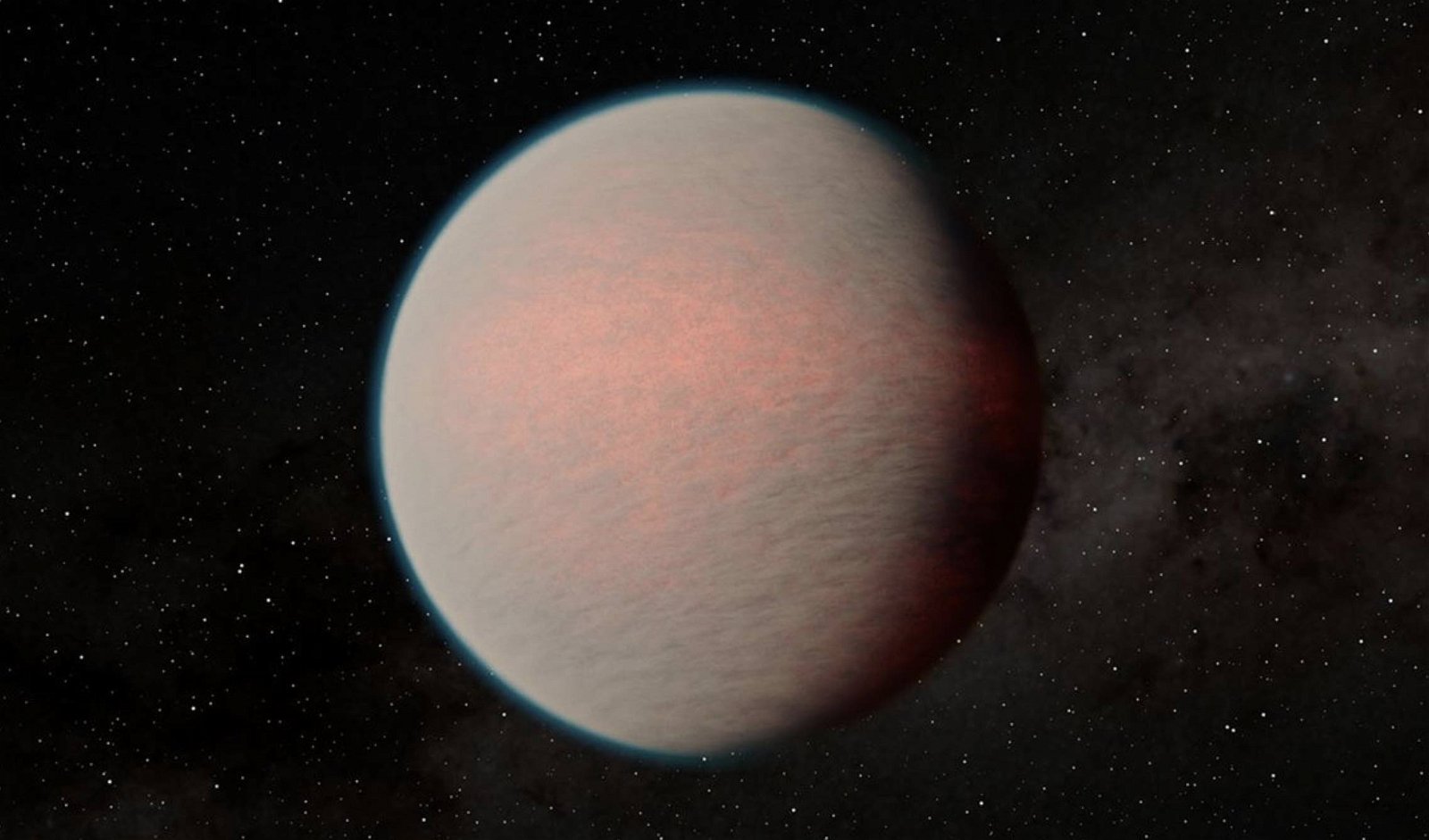Researchers using the James Webb Space Telescope (JWST) have successfully measured the light from a sub-Neptune-sized planet named GJ 1214b, which lies 40 light years from Earth, for the first time ever.
Sub-Neptune planets are larger than Earth but smaller than Neptune, meaning the JWST is finally delivering on its lofty promise to directly image and measure the light from exoplanets that are closer in size to Earth than the many massive gas giants discovered by previous telescopes.
The planet is likely too hot to sustain life but may also contain a significant amount of water.
Sub-Neptune Planets Most Common in the Milky Way Galaxy
Since the discovery of the first planet outside of our solar system in 1995, astronomers have discovered over 5,000 exoplanets. That number is only expected to increase. However, most of those discoveries have been made by inferring the planet’s presence due to its effects on its host star instead of directly imaging them. This is mainly due to the limitations of previous telescopes and the brightness of a planet’s host star, which can blot out a planet’s meager light signature.
Of the planets discovered thus far, which include a number of smaller, rocky Earth-sized worlds, the majority appear to be larger than Earth but smaller than Neptune. Astronomers call these “sub-Neptune” planets.
Now, the team of researchers behind this latest find says that the unique tools available on the JWST have finally broken that barrier, allowing them to learn a lot about the size, composition, and even the atmosphere of a sub-Neptune-sized alien world for the very first time.
JWST Finally Delivering on its Promise
“I’ve been on a quest to understand GJ 1214b for more than a decade,” said Eliza Kempton, an Associate Professor of Astronomy at the University of Maryland and the lead author on the paper announcing the breakthrough discovery. “When we received the data for this Nature paper, we could see the light from the planet just disappear when it went behind its host star.”
According to Kempton, this had never been seen before “for this planet or for any other planet of its class.”
“The JWST is really delivering on its promise,” she adds.
Published in the journal Nature, the team’s work involved keeping the JWST trained directly on GJ 1214b for 40 hours straight, which is a full trip for the planet around its host star. During this orbit, the heat from the planet’s atmosphere shifts with its motion, allowing astronomers to differentiate the light coming from the planet vs. the light from the star itself. It is a method that planet hunters have termed “phase curve observation,” and it is something that the JWST and its vast array of infrared imaging tools are uniquely suited to measure.
“JWST operates at longer wavelengths of light than previous observatories, which gives us access to the heat emitted by the planet and allows us to create a map of the planet’s temperature,” Kempton said. “We finally got to see GJ 1214b in a new light.”
New Sub-Neptune Planet May Be a Water World But is Likely Too Hot for Life
The light measured from GJ 1214b has revealed a few aspects of the planet’s atmosphere and potential composition that would not have been possible using older space telescopes like Hubble.
For instance, the light being reflected by the planet was particularly bright, meaning that whatever particles make up the haze and clouds that appear to cover the planet are something that is particularly good at reflecting light, maybe even metallic. This is in direct contrast to expectations, as previous work had indicated there might be a dark haze covering GJ 1214b.
“Whatever is making up the hazes or clouds is not what we expected,” Kempton said. “It’s bright, it’s reflective, and that’s confusing and surprising. This is going to point us toward a lot of further studies to try to understand what those hazes could be.”
Another significant discovery is the likely presence of water on the GJ 1214b. According to the researchers, the chemical signature for water is significant enough to consider the possibility that the planet is what they term a “water world.” Or, more simply put, a world that contains a significant amount of water.
Finding water in the atmosphere of any exoplanet is one of the main goals of current exoplanet research, as water is considered to be a key ingredient for life. Still, the researchers say that the planet is likely way too hot to host life, at least life as we know it. But, they note, further study of the planet and its atmosphere is required if we are to unlock all of its secrets.
“GJ 1214b, based on our observations, could be a water world,” Kempton said. “We think we detect water vapor.”
Kempton points out that differentiating water from the methane they also detected is difficult at this distance since their absorption overlaps. However, she notes, the signs of water vapor were spotted in both hemispheres of the planet, “which heightens our confidence that there really is water there.”
Christopher Plain is a Science Fiction and Fantasy novelist and Head Science Writer at The Debrief. Follow and connect with him on Twitter, learn about his books at plainfiction.com, or email him directly at christopher@thedebrief.org.

